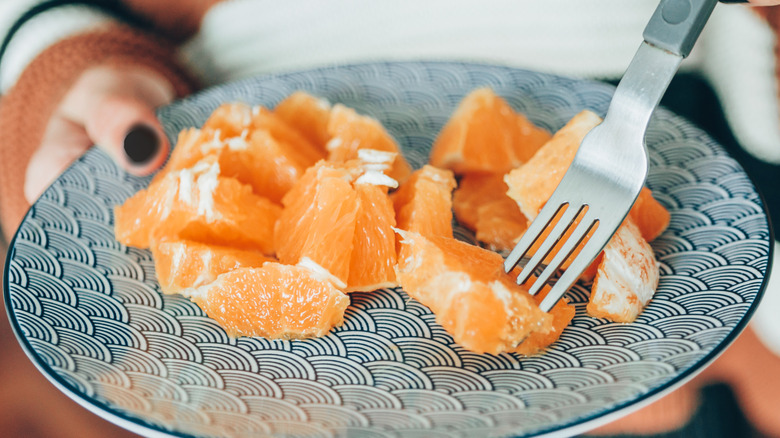You may wonder if the little-known ugli fruit is worth trying due to its questionable name. But this orange-tangerine-grapefruit hybrid (which is also called the Jamaican tangelo or uniq fruit) might be the perfect pick if you want to improve your cardiovascular health or lose weight. Ugli fruit may not be the prettiest citrus option in your favorite market, but it’s highly nutritious and contains nutrients to optimize your heart and other health benefits. Just half of the inside of an ugli fruit contains less than 50 calories, 2 grams of fiber, and substantial amounts of vitamin C.
As a result of its nutrient profile, ugli fruit could be a good choice to avoid overeating when you’re craving something sweet. After all, ugli fruit isn’t high in calories and contains fiber. And fiber consumption has been connected with satiety and weight loss. In fact, eating fiber may be just as important as watching calories if you’re trying to shed some pounds.
As a 2023 study from Frontiers in Nutrition concluded, consistently eating fiber-rich whole foods appeared to be linked to sustained weight loss. And that’s not surprising, given that a 2019 review from Foods indicated that fiber intake (particularly soluble fiber, which is found in citrus fruits) increased feelings of fullness in adults.
Ugli: Definitely not ugly for your heart
Of course, even if you ate an ugli fruit each day, it wouldn’t be enough to get you to the recommended daily fiber value of 25 grams for women and 38 grams for men. However, it could be the assistance you need to sustain a trimmer physique by eating foods aimed at maintaining your weight.
In addition to helping you reach your weight maintenance goals, the fiber in ugli fruit can provide a boost to your heart health. In a 2018 review in Nutrients, the findings of several studies showed potential connections between eating several servings of fiber-filled fruit each week and a lower risk of cardiovascular issues. In one of the studies mentioned, diabetics who ate fruit at least three times weekly decreased their chances of experiencing diabetes-related stroke or heart disease by up to 28%.
You don’t have to overdo your intake of fiber to see results, either. As highlighted in a 2019 article in Nutrients, a moderately higher intake of dietary fiber corresponded with a reduction in cardiovascular problems in multiple animal and human studies.
It’s worth noting that since ugli fruit falls in the citrus family, it has other nutritional properties and citrus-related health benefits that may make it cardioprotective, like flavonoids. Because they target free radicals, flavonoids may provide cardiovascular advantages, per a 2019 article in Oxidative Medicine and Cellular Longevity.
Pretty ways to eat ugli
Working with ugli fruit can be initially confusing, especially if you rarely stray from citrus foods more exotic than mandarin oranges. In general, look for an ugli fruit that feels hefty (it’s going to be around the size of a grapefruit), is soft when slightly squeezed, and doesn’t have any apparent dryness on the outside. When you get it home, you can just peel ugli fruit like an orange. Most ugli fruits peel beautifully because the rind is very substantial and doesn’t fall apart.
Like its citrus cousins, the actual “fruit” of the ugli fruit includes sections divided by a white pith that can easily be pulled out and eaten. If you prefer, you can also dice up the sections to add brightness and sweetness to other foods like salads or smoothies.
The only downside? Ugli fruit tends to be more expensive than some other citrus options. Case in point, the average cost of an ugli fruit at one popular supermarket chain was listed at $4.99 for one piece as of this article’s publication. In contrast, an orange at the same store was listed at just a little over a dollar. Therefore, you may want to reserve picking up ugli fruit as an occasional special treat for your weight and your heart.


